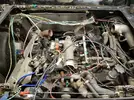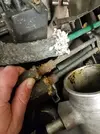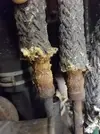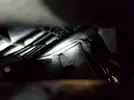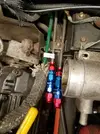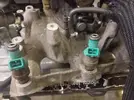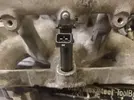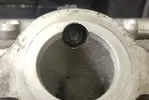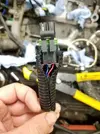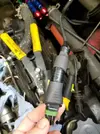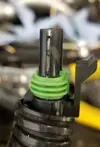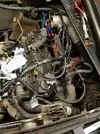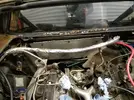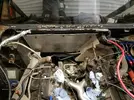Thanks Dave, as always!
Your posts are always witty and informative!
If i'd have known i'd have had a chat with you about why you should have gone with an encased ECU (as you know my preference is an Adaptronic) but this will be MUCH more entertainment for us!
You mean it'll be funny when it doesn't work? I just like the Megasquirt philosophy. Yes, it's probably going to be harder and take more time, but it will teach me a lot in the process and I can customise the ECU to my heart's content! It's also cheaper - I had a Megasquirt that I bought from a friend for £100...
I was going to suggest the VXR blues as they are pretty cheap brand new but the Siemens are a good choice, got those on the install i'm doing at the minute.
Yep - they were on my shortlist. I really liked the sound of the Siemens ones. Should be good. They're installed now:

Notice the AN-6 adapter screwed to the right-hand fuel rail...
Now on to the issue of the HT leads. First of all, to mount the coils, now for some highly advanced materials science. I mean bodgery... I decided to use some 9mm plywood to strengthen the left-hand shelf for mounting the LS-1 coils. I'm going for two towers of three coils - space constraints dictated that due to the proximity of the engine bay cooling fan. Once the ply is in place, no-one will ever know (except for you lot) as it'll be covered in carpet.
Don't :cl: me!
I used CAD (Cardboard Aided Design) to make a template:
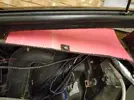
And then cut it out in ply:
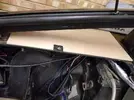
I also reason that the car is fibreglass anyway so it's now just got another advanced material in it! I made the ply part to cover the whole shelf as there are a couple of strengthening braces and brackets that I wanted the plywood strengthener to cover.
And then I mocked up the mounting of the coils. I didn't have long-enough bolts, so here are two coils mounted and a third mocked up:
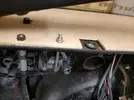
Unfortunately I slightly damaged the plywood when I drilled through it, so I may strengthen those drilled areas with some epoxy. Again, a bodge... I know, I know! I won't make any excuses. It's my car...
I'm using rubnuts to make captive nuts. They are like rivnuts but made of rubber!
The later attempts at drilling through the plywood were better as I put something behind it to stop the drill bit bursting through and breaking the outer layer of plywood.
My perfectionism may get the better of me again and I might end up having a second go at making the plywood shelf, but I think I'll leave it for now as I just want to get the car running!
For reference: fuel pipe layout for the fuel pressure regulator and pulse damper. I am renewing the rubber hoses:
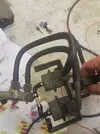
Note the lego man and instructions in the background! My son has been using my garage for lego building as I work on the car. Father/son time (sort of)! The pressure sensing hoses on the top of the regulator and pulse damper thingy are well past their best so will be renewed too.
The fuel hoses seemed to contain a plastic inner. I was worried that there were no hose clips on them, but, boy were they tight! No way they were coming off in a hurry - I had to cut them off.
Thanks Dave for your advice on enrichment and the HT leads, etc. I will route the HT leads as best I can. I'll need to get some custom ones made up and can use some of the OE routing for them.
Oh and yes, not going to use jubilee clips for the teflon line. I'll be doing that bit properly!
